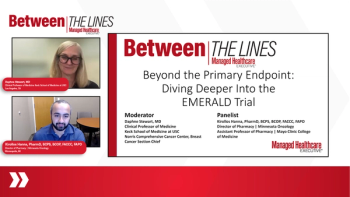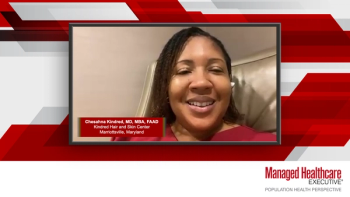
Unmet Needs in the Vaccination Landscape
Dr Lewis provides insight into general unmet needs surrounding vaccines.
Episodes in this series

James Lewis, PharmD, FIDSA: Regarding the unmet needs for vaccines in general, the question becomes, what are the true possibilities for vaccines even in some noninfectious disease scenarios? A melanoma study just looked at a vaccine in combination with immunomodulatory therapies that looked amazing. We may have to expand our scope beyond infectious diseases with vaccines. This technology, especially the mRNA technology, has amazing potential. But from an infectious disease standpoint, we’re starting to see the arrival of some things that I’d most like to see. A couple of years ago, before things were in phase 3, if you’d asked me what I wanted to see, RSV [respiratory syncytial virus] and CMV [cytomegalovirus] would have been at the top of that list.
In fact, in March, an FDA advisory panel recommended approval of 2 RSV vaccines. This is a huge step forward in the vaccine space and the infectious disease space. We know that RSV is a significant player in small children, but what a lot of folks don’t recognize is that this is a big deal in adults, especially adults over age 60. RSV vaccines for adults, especially over age 60, are going to take some big-time education [and require] a change in mindset. This needs to be 1 of the spaces where we think about how to best reach otherwise healthy 60-year-olds, to convince them or have an infrastructure in place to ensure that they get this vaccine. With RSV, you’re seeing a lot of movement with a couple of vaccines that probably will be approved in the next 3 to 6 months.
CMV vaccines are starting to creep up through phase 3, which is extremely exciting. From a hematologic-malignancy standpoint, we see a lot of problems due to CMV. I’d very much welcome a vaccine in that space. It would be a huge help for patients with hematologic-malignancies and other cancers. It would be very welcome.
The other thing that’s very exciting is this continued drumbeat, which you’ve seen in the literature, around a pan-influenza vaccine. We have to come back for our seasonal [vaccine] every year because the viruses change every year. Are there things that we could do to not have to worry as much about what the influenza virus is doing as far as changes go? There have been some exciting developments in this space. The New England Journal of Medicine published an implications of a basic science paper about the evolution of mRNA technologies in the flu vaccine and the ability to create a 20-valent flu vaccine, which is very cool looking. It works well in animals, which is really exciting.
There’s also been a lot of work developing flu vaccines that don’t go after the hemagglutinin, which changes every year, but [instead] go after the stock of the virus of influenza, that doesn’t change and is highly conserved. There has been a lot of cool evolution in that space because the influenza vaccines, while good, aren’t good enough. Many times patients have said to me, “I hear it doesn’t work,” or, “I hear it’s only 50% effective this year”—excuse after excuse about why not to get it. We need to do better in the influenza space, and we can. I’m cautiously optimistic that some of these developments that we’re seeing in the literature will bear fruit in yielding much better influenza vaccines.
Transcript edited for clarity.
Newsletter
Get the latest industry news, event updates, and more from Managed healthcare Executive.

















































